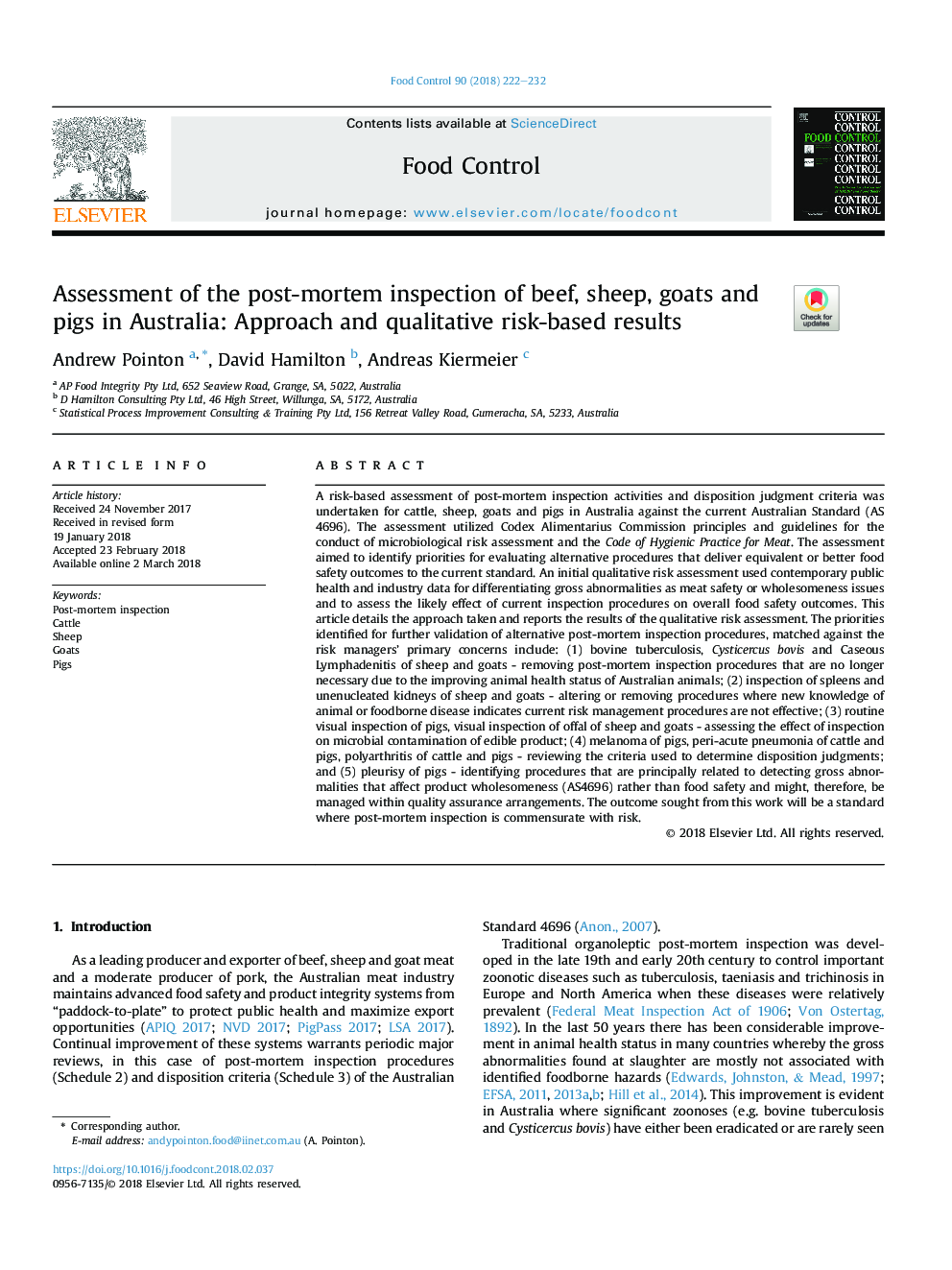| Article ID | Journal | Published Year | Pages | File Type |
|---|---|---|---|---|
| 8887977 | Food Control | 2018 | 11 Pages |
Abstract
A risk-based assessment of post-mortem inspection activities and disposition judgment criteria was undertaken for cattle, sheep, goats and pigs in Australia against the current Australian Standard (AS 4696). The assessment utilized Codex Alimentarius Commission principles and guidelines for the conduct of microbiological risk assessment and the Code of Hygienic Practice for Meat. The assessment aimed to identify priorities for evaluating alternative procedures that deliver equivalent or better food safety outcomes to the current standard. An initial qualitative risk assessment used contemporary public health and industry data for differentiating gross abnormalities as meat safety or wholesomeness issues and to assess the likely effect of current inspection procedures on overall food safety outcomes. This article details the approach taken and reports the results of the qualitative risk assessment. The priorities identified for further validation of alternative post-mortem inspection procedures, matched against the risk managers' primary concerns include: (1) bovine tuberculosis, Cysticercus bovis and Caseous Lymphadenitis of sheep and goats - removing post-mortem inspection procedures that are no longer necessary due to the improving animal health status of Australian animals; (2) inspection of spleens and unenucleated kidneys of sheep and goats - altering or removing procedures where new knowledge of animal or foodborne disease indicates current risk management procedures are not effective; (3) routine visual inspection of pigs, visual inspection of offal of sheep and goats - assessing the effect of inspection on microbial contamination of edible product; (4) melanoma of pigs, peri-acute pneumonia of cattle and pigs, polyarthritis of cattle and pigs - reviewing the criteria used to determine disposition judgments; and (5) pleurisy of pigs - identifying procedures that are principally related to detecting gross abnormalities that affect product wholesomeness (AS4696) rather than food safety and might, therefore, be managed within quality assurance arrangements. The outcome sought from this work will be a standard where post-mortem inspection is commensurate with risk.
Related Topics
Life Sciences
Agricultural and Biological Sciences
Food Science
Authors
Andrew Pointon, David Hamilton, Andreas Kiermeier,
